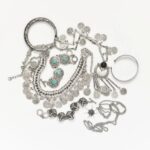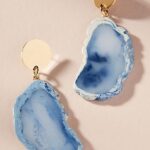Diamonds have captivated the human imagination for centuries, symbolizing beauty, luxury, and lasting love. These precious gems have become an integral part of the jewelry industry, adorning engagement rings, necklaces, earrings, and more. But have you ever wondered about the journey these diamonds embark upon before they are transformed into exquisite pieces of jewelry? How many diamonds mined actually meet the criteria to be a part of our cherished adornments?
The global diamond mining industry is a captivating realm filled with intriguing statistics and mesmerizing processes. From the depths of mines to the skilled hands of expert craftsmen, diamonds go through a remarkable transformation. In this article, we delve into the enthralling world of diamond mining to shed light on just how many diamonds can be made into jewelry.
Starting from the extraction process to diamond sorting and evaluation based on clarity, color, cut, and carat weight – also known as the four Cs – we explore how these factors determine a diamond’s usability for jewelry creation. We unveil the meticulous journey from rough to polished gemstone and take an in-depth look at the role played by diamond cutting centers in maximizing usable yields.
Join us on this enchanting exploration as we uncover not only the number of diamonds that make it into our treasured jewelry pieces but also gain insights into sustainable practices within the industry and discover alternatives like lab-grown diamonds. Prepare to be dazzled as we unravel the hidden beauty behind each glittering diamond that graces our fingers, ears, and necks.
The Diamond Mining Process
The diamond mining process is a highly intricate and fascinating journey that begins with the extraction of rough diamonds from mines. This section will delve into the various stages involved in diamond mining, highlighting the challenges faced and the advanced technology used to overcome them. From extraction to sorting, every step plays a crucial role in determining which diamonds can be transformed into stunning jewelry pieces.
Extraction: Unearthing Nature’s Treasures
Diamond extraction involves removing these precious gems from their natural deposits deep within the earth. The process often begins with open-pit mining, where large machinery is used to dig deep into the earth to access diamond-bearing rocks. In other cases, underground mining may be necessary when deposits are located beneath the surface.
However, extracting diamonds is not without its challenges. The rugged landscapes and remote locations of many diamond mines pose logistical difficulties. Furthermore, ensuring worker safety while maximizing production efficiency remains a constant priority for mining companies.
Sorting and Evaluating: Uncovering Diamond Potential
Once the diamonds have been extracted from the mines, they go through a meticulous sorting process. This step involves evaluating their quality and potential for use in jewelry creation. Advanced technologies like X-ray machines and laser sorters play a critical role in this stage.
During sorting, diamonds are assessed based on the four Cs-clarity, color, cut, and carat weight-to determine their suitability for jewelry production. For example, diamonds with high clarity ratings and vibrant colors are often selected for use in premium jewelry pieces.
It’s important to note that not all mined diamonds meet the criteria for turning into jewelry. Diamonds that do not meet certain standards may be used in industrial applications or become part of lower-priced jewelry items.
By understanding the intricacies of diamond sorting and evaluation processes, we gain insight into how many mined diamonds can actually be transformed into beautiful pieces of jewelry. From here, let’s explore what factors determine diamond usability and how they impact the journey from rough to polished diamonds.
Clarity, Color, Cut, and Carat
The Four Cs: Clarity, Color, Cut, and Carat
When it comes to determining the usability of a diamond for jewelry, four key factors play a significant role: clarity, color, cut, and carat weight. These criteria help evaluate the overall quality and appearance of a diamond and determine whether it can be transformed into a stunning piece of jewelry.
Clarity refers to the presence or absence of imperfections within the diamond. Most diamonds have some form of internal flaws called inclusions or external blemishes known as blemishes. The fewer these imperfections are, the higher the clarity grade assigned to a diamond. Diamonds with high clarity grades are more suitable for jewelry as they have better light reflection and sparkle.
Color is another crucial determinant of a diamond’s usability for jewelry. While many diamonds may appear colorless to the naked eye, they often possess subtle variations in hue. The Gemological Institute of America (GIA) grades diamonds on a scale from D (colorless) to Z (light yellow or brown). Higher-color grade diamonds are more desirable as they exhibit greater brilliance and fire when used in jewelry.
Cut refers to how well a diamond has been shaped and faceted by an expert cutter. It directly influences how effectively light passes through the stone, creating sparkle and brilliance. A well-cut diamond optimizes light reflection and refraction, enhancing its visual appeal. Proper symmetry and proportions are essential for maximizing a diamond’s potential as viable jewelry material.
Carat weight is probably the most well-known factor related to diamonds due to its association with size. Carat weight measures how much the diamond weighs on a scale ranging from 0.01 carats to several carats. However, carat weight alone does not dictate whether or not a diamond is suitable for jewelry; it must be considered alongside other factors like cut quality and shape.
Determining Diamond Usability through Evaluation
To determine whether a diamond can be used for jewelry, gemologists and experts carefully evaluate these factors. They use various instruments and techniques to assess the clarity, color, cut, and carat of each stone.
When it comes to clarity evaluation, gemologists use a 10x magnification loupe or microscope to identify inclusions or blemishes. The GIA utilizes an internationally recognized clarity grading scale that includes grades from Flawless (no visible internal or external flaws) to Included (inclusions visible to the naked eye).
Color determination involves comparing diamonds against a set of master stones with well-known colors. This process helps gemologists assign a specific color grade to each diamond. The GIA grading systems ensure consistency in color assessment across the industry.
Cut evaluation is more complex and requires advanced equipment such as precision measuring tools, reflector scopes, and imaging technologies. Gemologists analyze a diamond’s proportions, symmetry, polish quality, and light performance to assess its cut grade accurately.
Carat weight is determined utilizing highly sensitive weighing scales that measure the actual weight of the diamond.
By thoroughly evaluating these four factors, experts can distinguish between diamonds that meet the criteria for becoming exquisite jewelry pieces and those that may serve other purposes outside of traditional jewelry-making.
Examples of Diamond Usability for Jewelry Production
To illustrate how these factors influence a diamond’s usability for jewelry production, let’s consider two hypothetical diamonds:
- Diamond A: This stone has a high clarity grade (Flawless), excellent color (D), an ideal cut with precise proportions, and weighs 0.75 carats. These exceptional characteristics make it perfect for creating exquisite diamond solitaire rings or intricate pendant designs.
- Diamond B: In contrast, this stone has numerous visible inclusions (Included grade), noticeable yellowish tint (VVS2 color grade), fair cut quality with suboptimal proportions, and weighs 2.5 carats. While Diamond B may not be suitable for jewelry that accentuates brilliance and sparkle, it could potentially be used for unique designs that showcase its distinct characteristics.
These examples highlight the inherent variety in diamond versatility for jewelry production and emphasize the importance of evaluating individual stones based on their specific combination of factors.
With an understanding of how clarity, color, cut, and carat determine a diamond’s usability, we can now appreciate the significance of these factors in creating stunning diamond jewelry pieces that capture the beauty of these precious gems.
The Journey of a Diamond
When a diamond is first extracted from the mines, it is in its rough form and lacks the brilliance and elegance that we associate with a polished gemstone. Transforming a rough diamond into a beautiful polished gemstone is a meticulous process that requires expertise and craftsmanship at each stage.
The journey begins with careful planning, where experts examine the rough diamond to determine the most suitable shape and size for cutting. This ensures that the final polished diamond maximizes its potential while minimizing waste. Once the plan is established, the diamond undergoes cleaving, which involves splitting the rough stone along specific planes to create smaller pieces known as “diamond bruts”.
Diamond bruts are then shaped through bruting, where two diamonds are rubbed against each other to achieve the desired shape. This process requires precision and accuracy to maintain symmetry and proportions. Once the preliminary shaping is complete, diamond cutters use polishing techniques to refine the surfaces and facets of the stone, revealing its brilliant sparkle.
Throughout this journey from rough to polished, skilled artisans meticulously handle each diamond, working diligently to bring out its true beauty and potential. The transformation is truly remarkable when before-and-after images of diamonds are compared side by side. What was once an unremarkable piece of carbon becomes a dazzling gem that captures light and hearts alike.
In order for a diamond to be transformed into jewelry, it must go through this meticulous journey from rough to polished. Each step contributes to enhancing its usability for various jewelry settings. The expertise involved ensures that diamonds achieve their maximum brilliance, fire, and scintillation – characteristics highly valued in jewelry design.
From engagement rings adorned with sparkling solitaires to exquisite earrings, necklaces, bracelets, and more – every piece of diamond jewelry has undergone this incredible journey from a rough stone to a breathtaking gemstone that adds timeless elegance to any ensemble.
The Role of Diamond Cutting Centers
Diamond cutting centers play a crucial role in the diamond industry by maximizing the number of diamonds suitable for jewelry. These centers employ advanced technologies and techniques to optimize usable yields, ensuring that a significant portion of mined diamonds can be transformed into stunning jewelry pieces. Skilled cutters are instrumental in enhancing the value and usability of diamonds through their precision and accuracy in shaping them for jewelry settings.
In diamond cutting centers, state-of-the-art machinery is used to meticulously shape rough diamonds into polished gemstones. The process involves several stages, starting with planning and marking the rough diamond to determine its optimal cut. Then comes cleaving, which is the separation of the rough diamond into smaller pieces along its natural grain lines. Next, bruting follows, where two diamonds are rotated against each other to create round shapes.
Once the basic shape is achieved, skilled craftsmen employ various techniques such as faceting and polishing to enhance the brilliance and shine of each diamond. Each step requires expertise and attention to detail to bring out the maximum potential of the stone. It is through this careful process that diamonds are transformed from raw materials into sparkling gems ready for use in exquisite jewelry pieces.
Precision plays a vital role in shaping diamonds for jewelry settings. Cutters need to take into account various factors such as symmetry, proportions, and finishing to ensure that each diamond meets the requirements for specific jewelry designs. A perfectly cut diamond not only enhances its brilliance but also maximizes its overall appeal when set in different types of jewelry settings.
From Sparkling Solitaires to Exquisite Diamond Jewelry
Diamonds are not only coveted for their beauty and rarity, but also for the endless design possibilities they offer in the creation of exquisite jewelry pieces. From sparkling solitaires to intricate diamond-studded designs, the world of diamond jewelry is a playground for creativity and artistry. In this section, we will explore some of the most popular diamond cuts and settings used in jewelry design, showcasing stunning examples of diamond jewelry that demonstrate the range of sizes and shapes employed.
One of the most iconic and timeless designs in diamond jewelry is the solitaire ring. This classic setting features a single diamond prominently showcased on a band, allowing its brilliance and fire to take center stage. Solitaire rings come in various styles, including the classic round brilliant cut, as well as fancy shapes such as princess-cut, emerald-cut, and oval-shaped diamonds. These designs embody elegance and simplicity, making them a popular choice for engagement rings.
In addition to solitaires, there are numerous other settings that showcase the beauty of diamonds in different ways. Halo settings, for example, feature a central diamond surrounded by smaller accent diamonds that create a halo effect.
This design enhances the overall sparkle and size of the center stone while adding an extra layer of brilliance to the piece. Other popular settings include three-stone rings, pave settings (where smaller diamonds are set closely together), channel settings (where diamonds are set into a channel within the band), and vintage-inspired designs that evoke timeless glamour.
Diamonds are not limited to just rings; they can also be found adorning earrings, necklaces, bracelets, and more. Diamond stud earrings are a classic choice that never goes out of style. These earrings feature simple yet elegant designs with one or multiple diamonds set on each earlobe. Diamond necklaces can range from delicate pendants with dainty diamonds to elaborate statement pieces featuring large gemstones surrounded by intricate diamond accents.
| Diamond Jewelry Piece | Description |
|---|---|
| Princess Cut Diamond Halo Engagement Ring | This captivating ring features a princess-cut diamond surrounded by a halo of smaller round diamonds. The sparkling diamonds are set on a delicate band, creating a stunning combination of modern elegance and vintage allure. |
| Diamond Tennis Bracelet | A timeless piece that showcases a continuous line of diamonds held together by metal links, forming an elegant and flexible bracelet. Diamond tennis bracelets can be worn alone or stacked with other wrist accessories for a glamorous look. |
| Pear-Shaped Diamond Drop Earrings | These exquisite earrings feature pear-shaped diamonds suspended from diamond-studded earlobe settings. The elongated shape of the pear-cut diamonds adds a touch of sophistication to any outfit, making them perfect for special occasions. |
The possibilities for diamond jewelry design are truly endless. With their unmatched brilliance and versatility, diamonds continue to inspire designers and captivate jewelry enthusiasts around the world.
Sources:
- Gemological Institute of America (GIA).
- Tiffany & Co.
- Blue Nile.
The Impact of Diamond Mining on the Environment and Sustainable Practices
Diamond mining is not without its environmental consequences. The process of extracting diamonds from the earth can have a significant impact on the surrounding ecosystem. Deforestation, soil erosion, and water pollution are some of the detrimental effects associated with traditional diamond mining practices. These environmental concerns have prompted the jewelry industry to take steps towards more sustainable and responsible sourcing of diamonds.
To address these concerns, various initiatives and certifications have been established to promote ethical diamond mining practices. One such initiative is the Kimberley Process Certification Scheme (KPCS), which aims to prevent conflict diamonds from entering the global market. The KPCS requires participating countries to implement strict regulations and certification procedures to ensure that diamonds are sourced from lawful and conflict-free origins.
In addition to ethical sourcing, there is also a growing interest in lab-grown diamonds as an alternative to traditional mining. Lab-grown diamonds are created through a process that replicates the natural conditions under which diamonds form in nature. This eliminates the need for large-scale mining operations and reduces the environmental footprint associated with diamond extraction. Lab-grown diamonds offer consumers a sustainable choice while still retaining the beauty and brilliance of natural diamonds.
Overall, it is crucial for both consumers and businesses in the jewelry industry to prioritize sustainable practices when it comes to diamond sourcing and production. By supporting ethical mining practices and exploring alternatives like lab-grown diamonds, we can minimize our impact on the environment while still enjoying the beauty of these precious gems.
– Some initiatives and certifications promoting ethical diamond mining include:
- The Kimberley Process Certification Scheme (KPCS).
- Responsible Jewellery Council (RJC) certification.
- Fairtrade gold certification.
– Advantages of lab-grown diamonds:
- Eliminates destructive mining practices.
- Reduces carbon footprint.
- Offers a sustainable alternative without compromising beauty or quality.
The Final Frontier
When it comes to the world of diamond mining, there is a fascinating question that arises: how many of the diamonds mined can actually be transformed into stunning jewelry pieces? It’s an intriguing topic to explore, considering the allure and significance of diamonds in the jewelry industry. While the exact numbers vary depending on several factors, statistical insights shed light on the percentage of mined diamonds that meet the criteria for jewelry usage.
According to industry experts, only a small fraction of all diamonds mined are suitable for jewelry production. The majority of these gems fall into lower quality categories or have unique characteristics that make them less desirable for traditional jewelry settings. In fact, it is estimated that less than 20% of all rough diamonds are used for high-quality jewelry. This emphasizes the rarity and value associated with diamonds that meet the stringent criteria for clarity, color, cut, and carat weight.
The market demand and supply dynamics also play a significant role in determining the number of diamonds converted into jewelry. As consumer preferences evolve and trends shift over time, there may be fluctuations in demand for certain types of diamond jewelry. Additionally, factors such as economic conditions and global events can impact consumer spending habits and influence the demand for diamond-studded pieces. Jewelers and manufacturers closely monitor these trends to optimize their production processes and meet market demands effectively.
To better understand the potential factors affecting the number of diamonds used in jewelry, it is essential to consider various aspects such as market trends, customer preferences, technological advancements in cutting techniques, availability of skilled artisans, and ethical sourcing practices. All these variables contribute to shaping the industry’s landscape and ultimately influence how many diamonds end up adorning beautiful pieces of jewelry.
| Statistic | Data |
|---|---|
| Percentage of diamonds suitable for jewelry production | Less than 20% |
| Global rough diamond production (2019) | 142 million carats |
| Value of global diamond jewelry market (2020) | $72.1 billion |
Conclusion
In conclusion, the journey from a rough diamond mined from the earth to a polished gemstone adorning a piece of jewelry is an awe-inspiring process that unveils the hidden beauty within these precious gems. Through exploring the intricacies of diamond mining, we have gained a deeper understanding of how many diamonds actually make it to the realm of jewelry.
As revealed through statistical insights, only a small percentage of mined diamonds meet the criteria for jewelry usage due to factors such as clarity, color, cut, and carat weight. The demand and supply dynamics in the market also play a role in determining how many diamonds are transformed into jewelry. However, this limited number does not diminish the value and rarity that each individual diamond possesses.
Throughout this article, we have witnessed the expertise and craftsmanship required at every step of the diamond’s journey. From extraction to sorting, cutting centers play a crucial role in maximizing usable yields by utilizing advanced technologies and skilled cutters. Moreover, the design possibilities for diamond jewelry are boundless – from sparkling solitaires to exquisite pieces that adorn engagements rings, earrings, necklaces, and more.
Amidst all this beauty lies an important consideration – that of responsible sourcing and sustainable practices. While diamond mining raises environmental concerns, initiatives promoting ethical mining and alternatives like lab-grown diamonds contribute to sustainable jewelry manufacturing.
Let us take a moment to appreciate not just the stunning end products but also the journey behind them. Discovering and adorning ourselves with diamond jewelry allows us to express our individuality while being reminded of their value and rarity. These precious gems truly deserve our admiration as we treasure both their hidden beauty and their ability to make us sparkle from within.
Frequently Asked Questions
What percentage of diamonds mined can be used for jewellery?
The percentage of diamonds mined that can be used for jewelry varies depending on the quality and characteristics of the diamonds. However, it is estimated that only a small percentage, around 20%, of all mined diamonds meet the necessary criteria to be considered suitable for use in jewelry.
Diamonds used in jewelry need to have desirable qualities such as clarity, color, and cut to enhance their beauty and value. This means that a significant portion of diamonds extracted from mines is not suitable for direct use in jewelry but may still have industrial or commercial applications.
Are 80% of the world’s diamond suitable for jewellery?
No, 80% of the world’s diamonds are not suitable for jewelry. As mentioned earlier, only around 20% of all mined diamonds are considered fit for use in jewelry due to their quality and characteristics.
The majority of diamonds fall short of meeting the required standards when it comes to factors like colorlessness, clarity, and cut precision. These less desirable diamonds may still find alternative uses outside of jewelry, such as industrial purposes like cutting tools or abrasives.
What are 80% of all diamonds are used to make?
Approximately 80% of all diamonds are used for industrial purposes rather than being utilized in the production of jewelry. These industrial-grade diamonds possess strength and hardness properties that make them valuable in various sectors like manufacturing, construction, mining, and electronics.
Industrial diamond applications include cutting and grinding tools, drill bits, saw blades, heat sinks for electronic devices, polishing compounds, bearings for high-precision equipment, and even specialized windows used in lasers or x-ray machines. While these utilitarian applications might not hold the same allure as exquisite gemstones adorning jewelry pieces, they play a crucial role across numerous industries where durability and precision are paramount requirements.

Welcome to my jewelry blog! My name is Sarah and I am the owner of this blog.
I love making jewelry and sharing my creations with others.
So whether you’re someone who loves wearing jewelry yourself or simply enjoys learning about it, be sure to check out my blog for insightful posts on everything related to this exciting topic!





